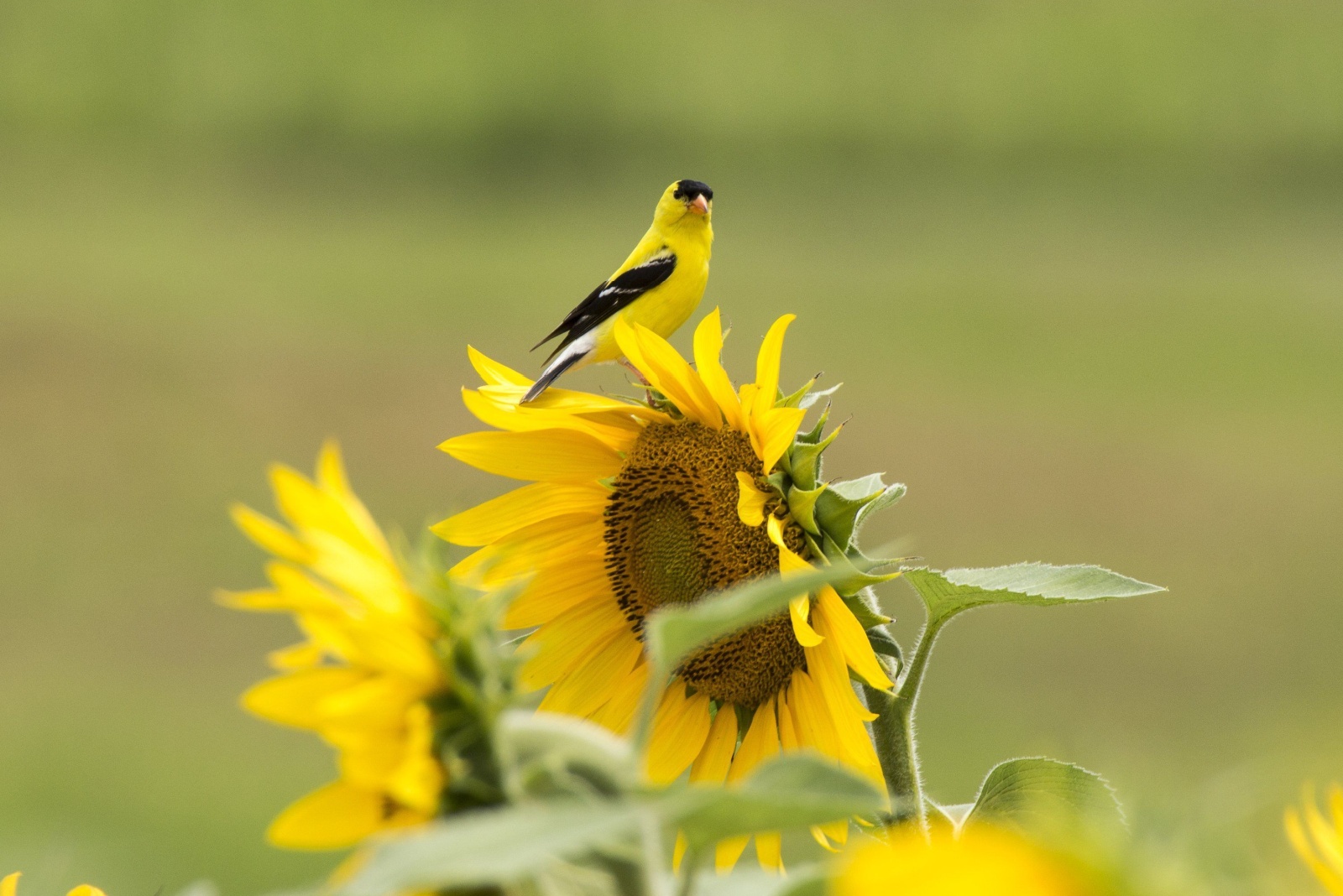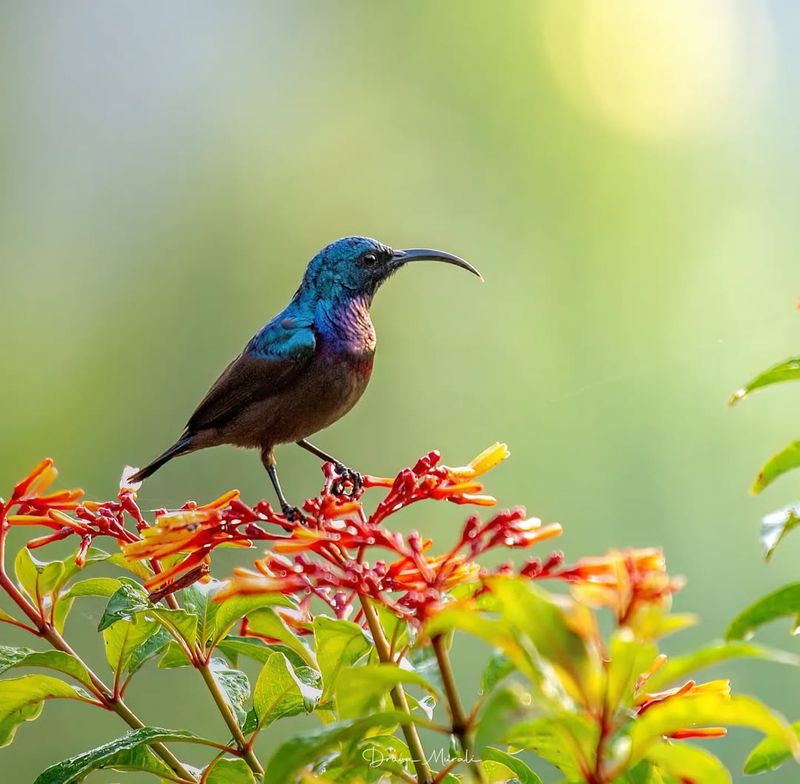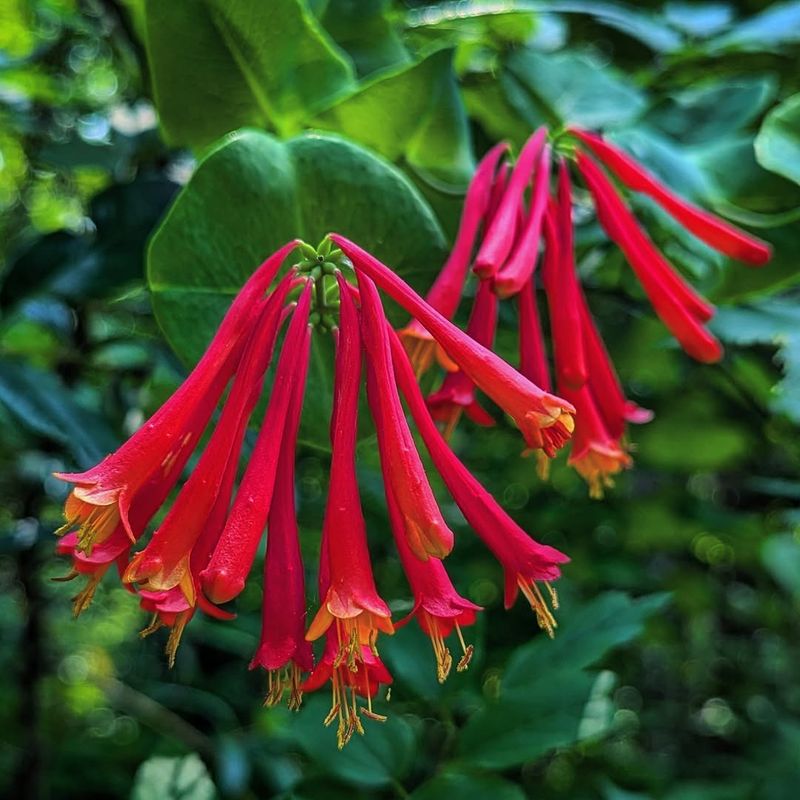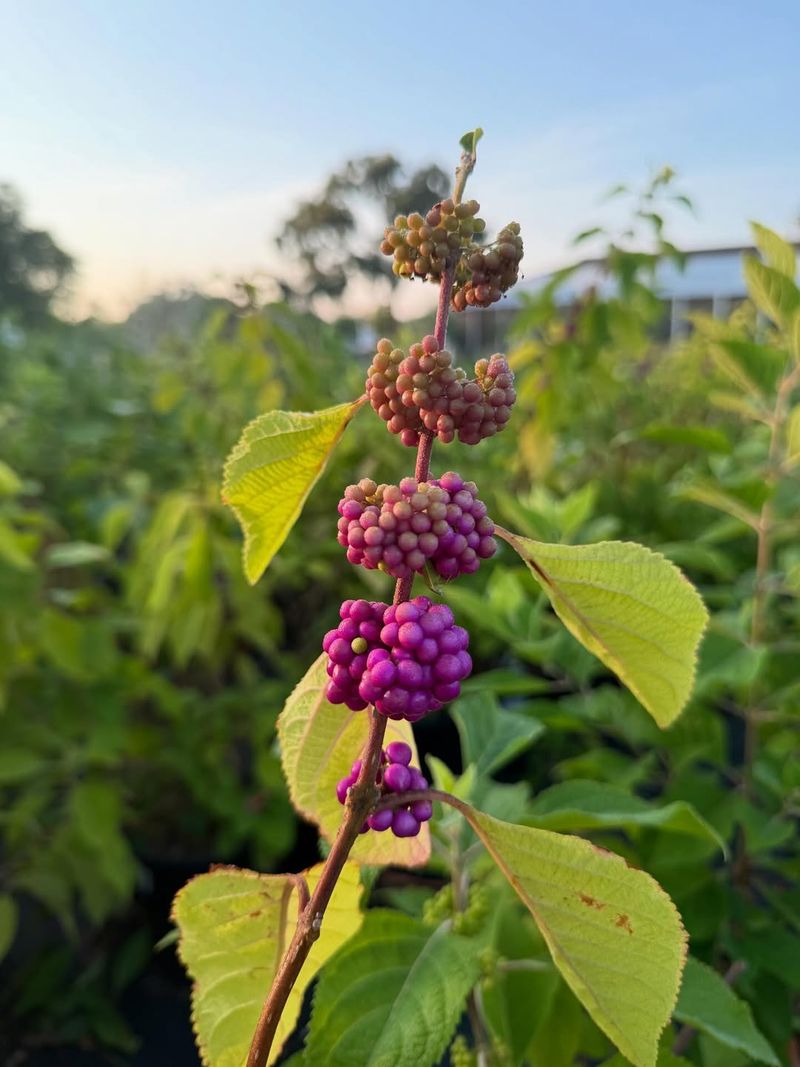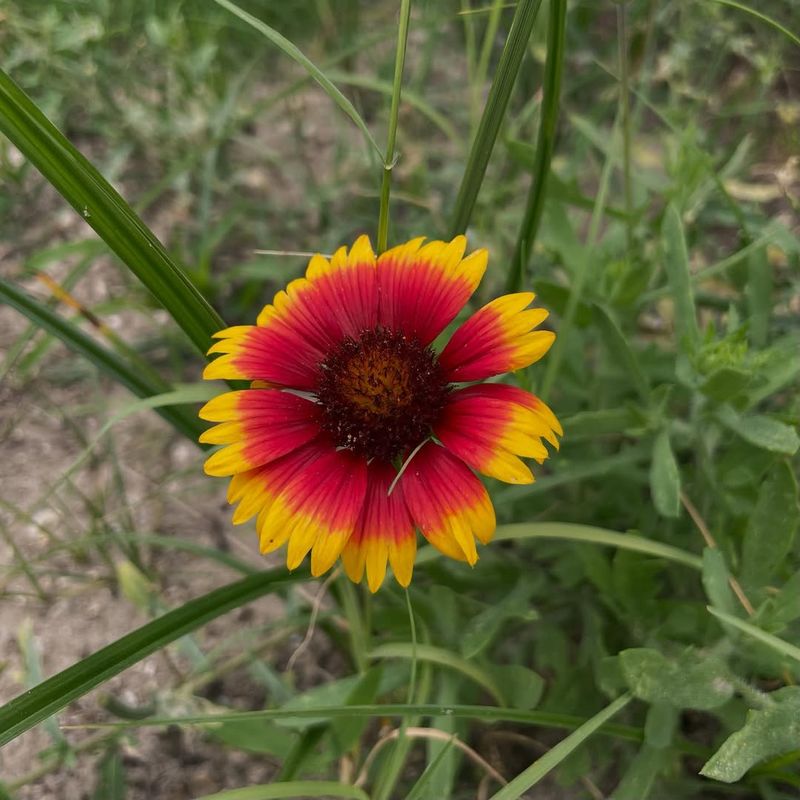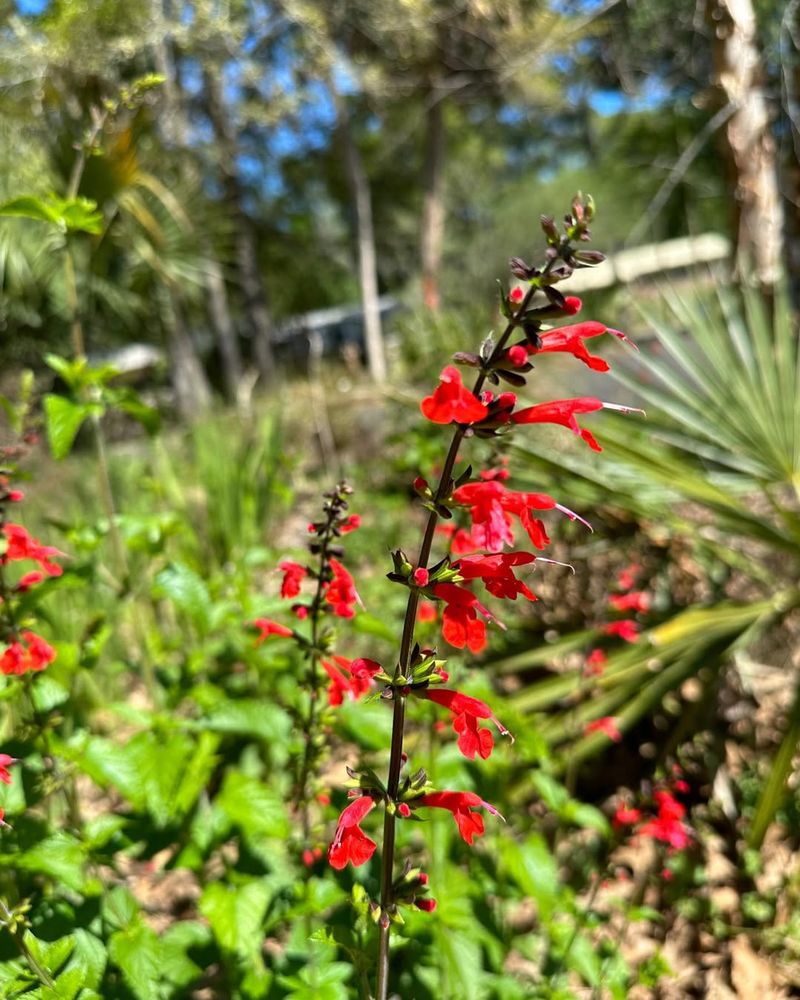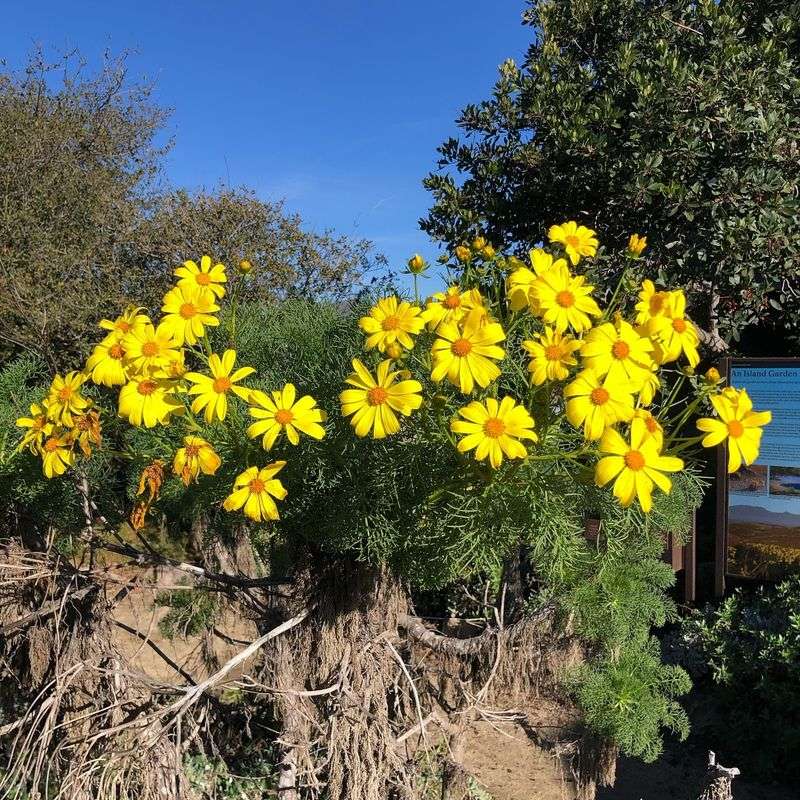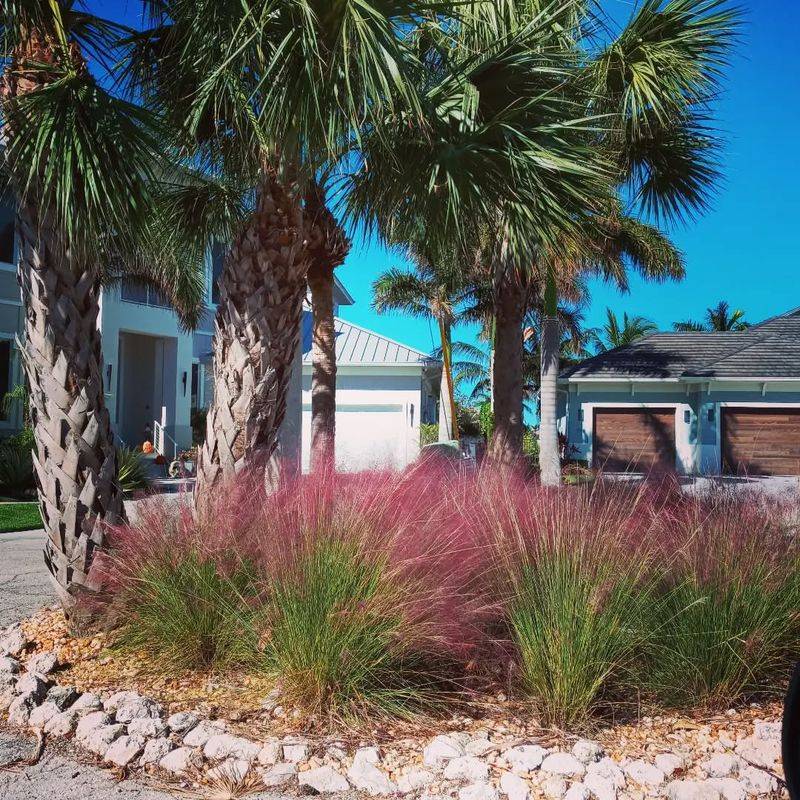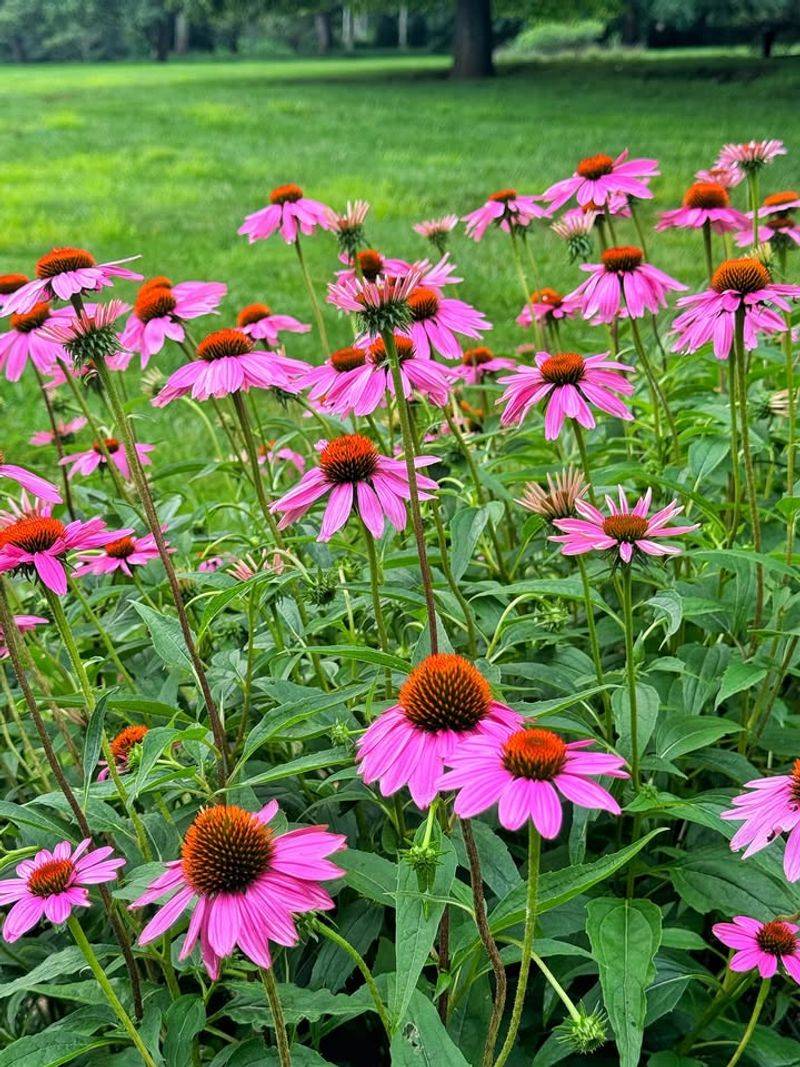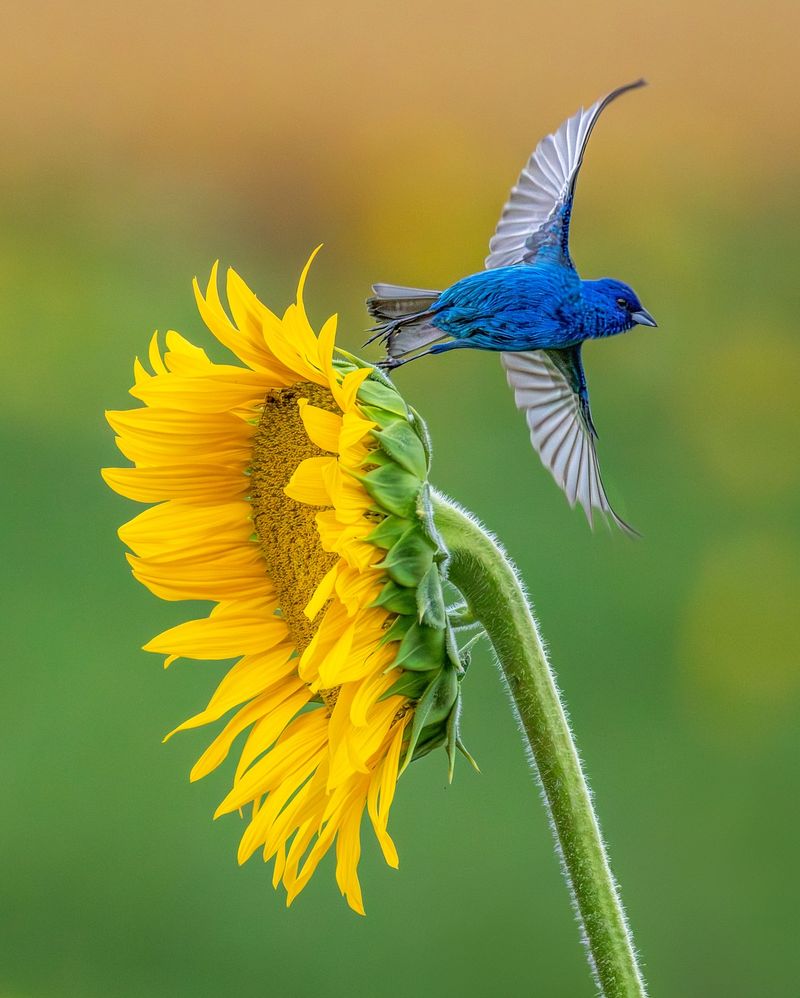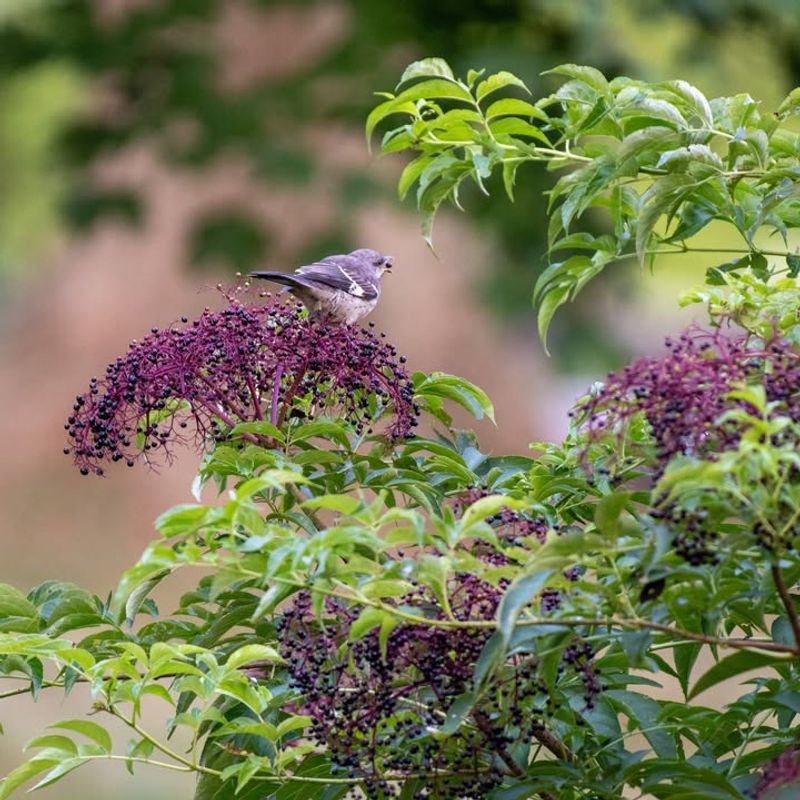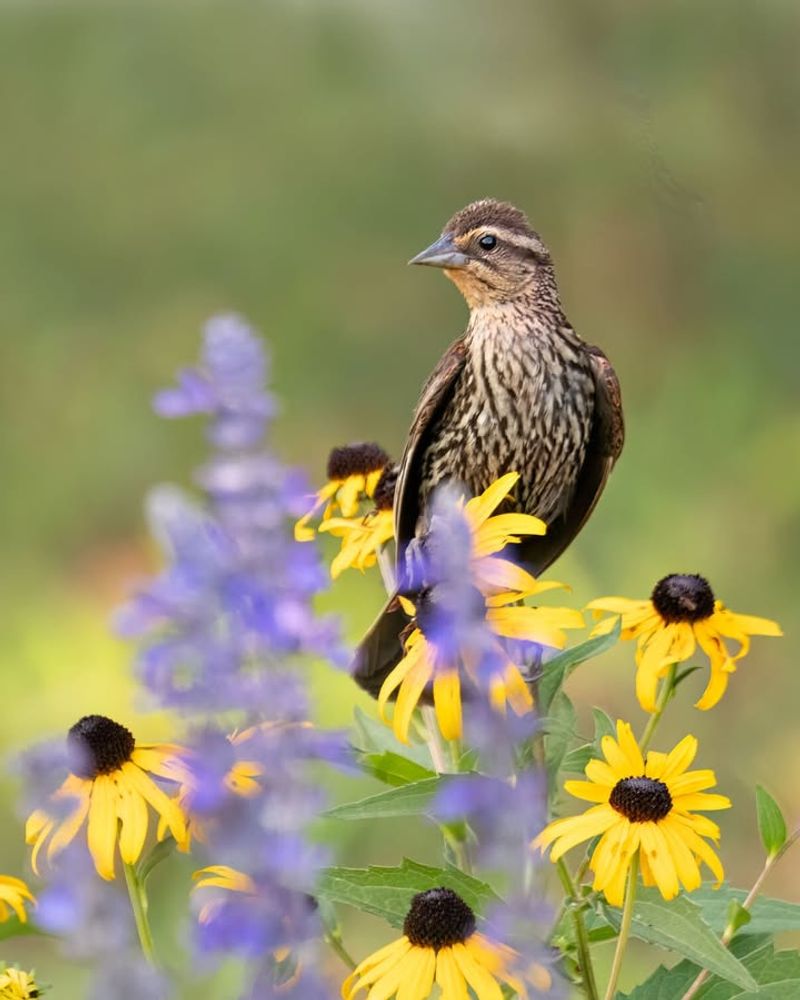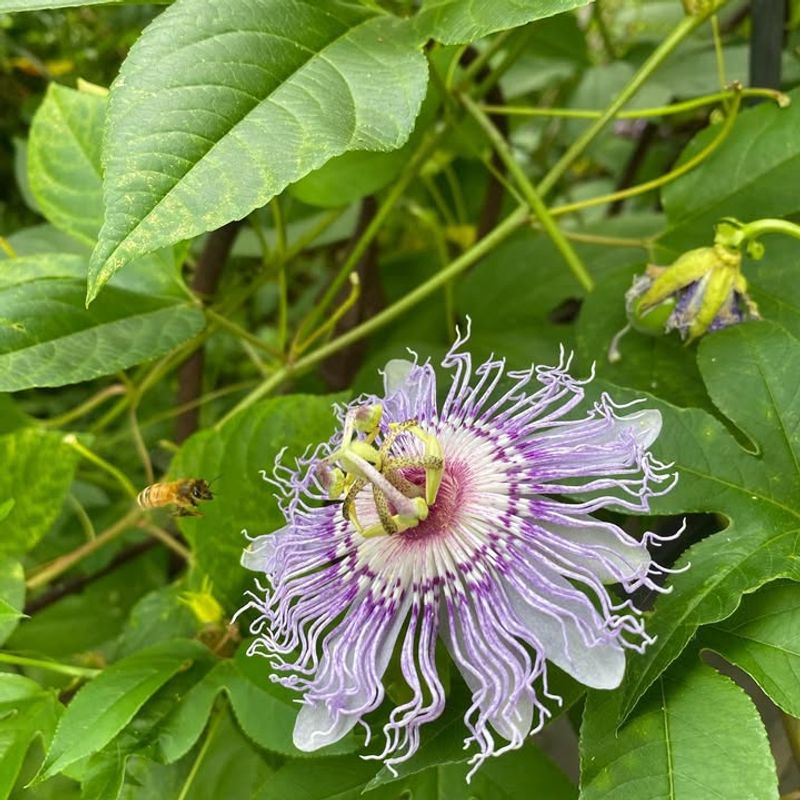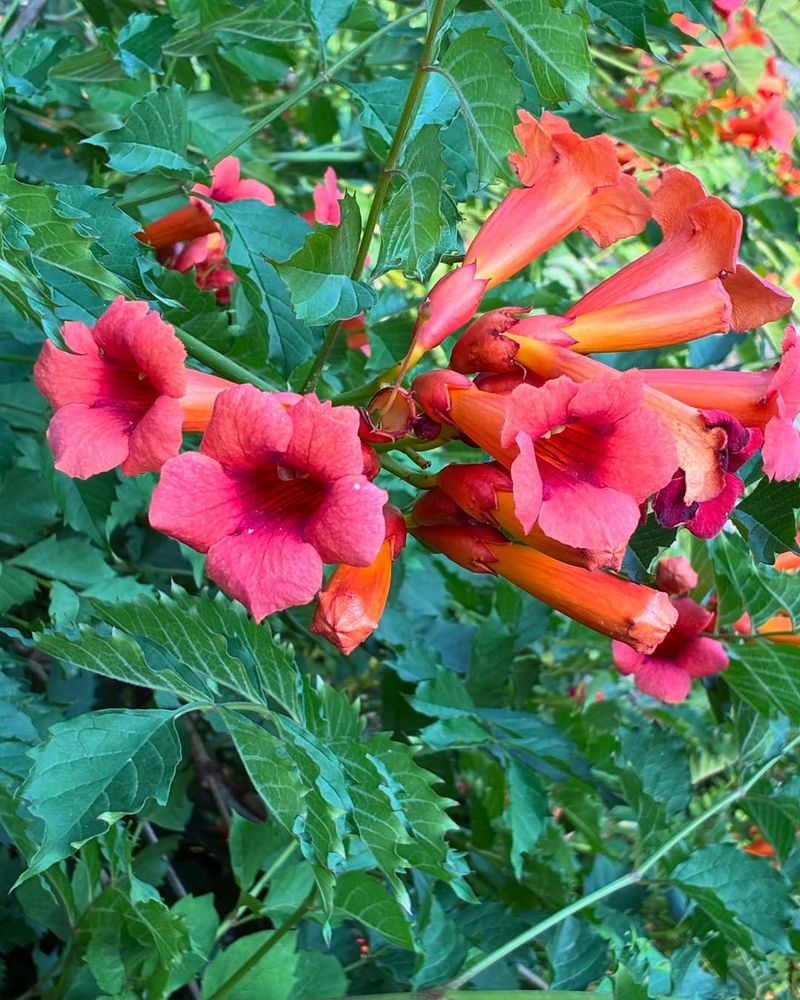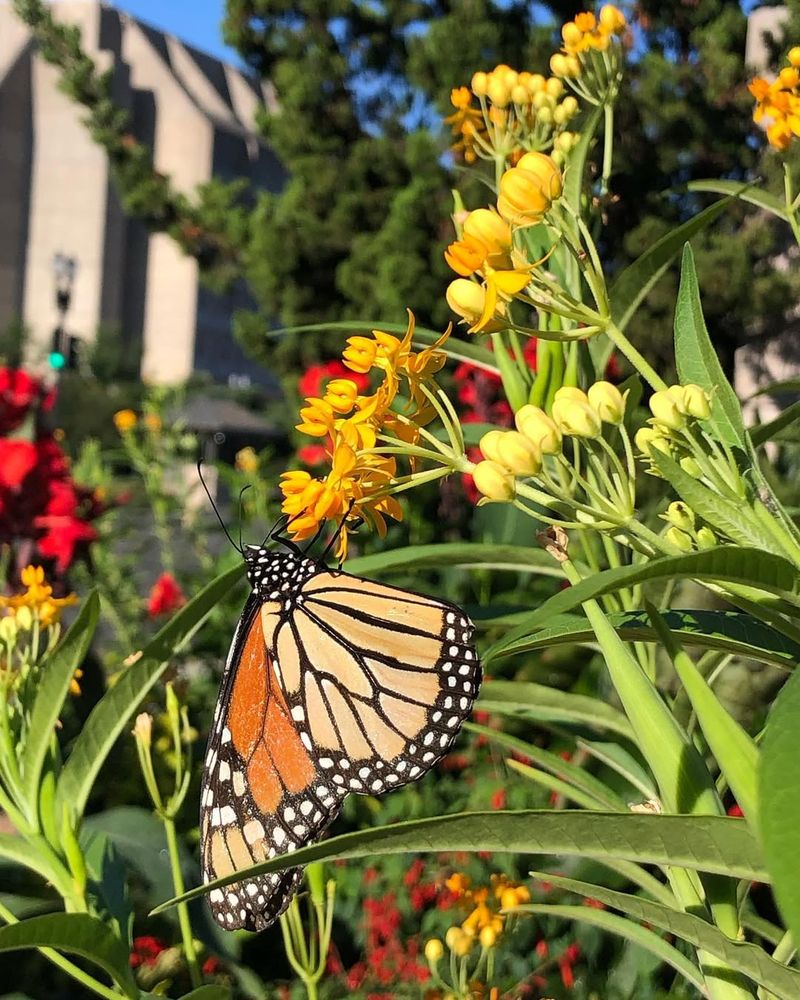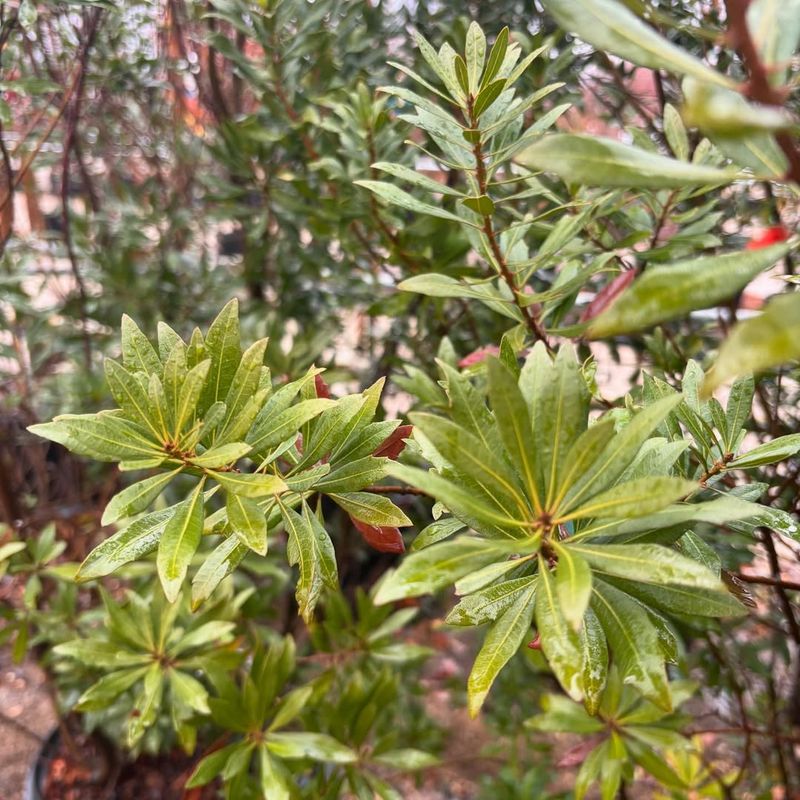Watching colorful songbirds flit through your garden is one of Florida’s special joys. Many birds visit gardens not just for feeders but for the natural food and shelter that native flowers provide.
By planting the right blooms, you can transform your yard into a songbird paradise while adding beautiful colors and textures to your landscape.
1. Firebush (Hamelia patens)
Native Firebush creates a bird bonanza with its tubular orange-red flowers that produce sweet nectar. Hummingbirds can’t resist them, while cardinals and mockingbirds feast on the dark berries that follow.
Plant this shrub in full to partial sun, where it can reach 8 feet tall. Firebush thrives in Florida’s heat and handles drought once established, making it perfect for low-maintenance wildlife gardens.
2. Coral Honeysuckle (Lonicera sempervirens)
Winding its way through garden trellises, coral honeysuckle’s trumpet-shaped blooms create a perfect feeding station for songbirds. Unlike its invasive Japanese cousin, this native vine supports local wildlife without taking over.
Ruby-throated hummingbirds hover at the coral-red flowers, while catbirds and thrashers gobble up the bright red berries. Growing up to 20 feet, this semi-evergreen climber adds vertical interest to any bird-friendly garden.
3. Beautyberry (Callicarpa americana)
Stunning purple berry clusters make American beautyberry a showstopper in fall gardens. Mockingbirds, cardinals, and catbirds flock to feast on the vibrant berries that encircle woody stems like amethyst bracelets.
Growing 3-8 feet tall in dappled shade, this deciduous shrub tolerates Florida’s sandy soils beautifully. The light pink summer flowers attract butterflies too, creating a wildlife haven that brings movement and song to your garden year-round.
4. Blanketflower (Gaillardia pulchella)
Goldfinches and sparrows adore blanketflower’s seed-filled centers, often perching right on the sturdy stems to feast. The daisy-like blooms with fiery red and yellow petals create a drought-resistant buffet for seed-eating songbirds.
Scattering these native wildflowers in sunny spots creates instant bird habitat. Their cheerful blooms last from spring through fall in Florida gardens, requiring almost no care while attracting finches that entertain with their acrobatic feeding displays.
5. Scarlet Sage (Salvia coccinea)
Hummingbirds zoom straight to scarlet sage’s brilliant red flower spikes, unable to resist the nectar-rich blooms. This native salvia grows quickly in Florida gardens, creating a reliable food source for both resident and migrating birds.
Growing 2-4 feet tall, scarlet sage thrives in partial shade and reseeds freely. The bright flowers appear almost year-round in South Florida, providing consistent nourishment for songbirds when other nectar sources may be scarce.
6. Coreopsis (Coreopsis lanceolata)
Florida’s state wildflower attracts a parade of songbirds with its cheery yellow blooms and abundant seeds. Goldfinches, chickadees, and sparrows visit coreopsis for the nutritious seeds that develop after flowering.
Also called tickseed, these native flowers thrive in full Florida sun and sandy soil. Plant them in drifts for maximum visual impact and bird appeal. Their long blooming season from spring through fall ensures your garden remains a popular dining spot for seed-eating birds.
7. Muhly Grass (Muhlenbergia capillaris)
Fall brings a spectacular pink cloud of feathery seed heads to muhly grass, creating both beauty and bird food. Sparrows and finches flock to these native grasses, plucking seeds while finding shelter among the dense clumps.
Standing 3 feet tall, muhly grass creates an ethereal sunset-pink haze when backlit by afternoon sun. The grass provides nesting material for birds in spring and nutritious seeds in fall, making it a multi-season attraction for Florida’s feathered visitors.
8. Purple Coneflower (Echinacea purpurea)
Goldfinches perform acrobatic displays on purple coneflower seed heads, often hanging upside down to reach the nutritious seeds. The distinctive purple-pink flowers with raised centers create natural bird feeders that last well into winter.
Growing 2-4 feet tall in sunny spots, coneflowers provide both nectar for butterflies and seeds for birds. Leave the dried seed heads standing through fall and winter rather than deadheading, creating a sustainable food source when birds need it most.
9. Sunflowers (Helianthus annuus)
Cardinals, blue jays, and chickadees flock to sunflowers, nature’s perfect bird feeders. The massive flower heads filled with nutritious seeds become bustling bird cafeterias in late summer and fall.
Florida’s sunshine helps these giants reach impressive heights, creating dramatic vertical elements in gardens. Plant a succession of sunflower varieties for a continuous harvest. The birds will thank you with their cheerful presence as they cling to the sturdy stems and extract seeds.
10. Elderberry (Sambucus nigra)
Over 40 bird species feast on elderberry’s purple-black fruit clusters, making it a top songbird attraction. Mockingbirds, catbirds, and thrashers especially love the juicy berries that appear after the creamy white flower clusters fade.
Growing 5-12 feet tall, elderberry thrives in moist areas of Florida gardens. The umbrella-shaped flower clusters bloom in spring, followed by nutritious berries in summer. Birds help spread the seeds, creating natural habitat corridors throughout neighborhoods.
11. Black-eyed Susan (Rudbeckia hirta)
Finches and sparrows balance delicately on black-eyed Susan’s seed-laden centers, creating a garden spectacle. The golden petals surrounding dark centers make these native flowers both beautiful and functional bird feeders.
Thriving in Florida’s full sun, black-eyed Susans form impressive colonies when happy. Their abundant seeds persist through winter, providing crucial nutrition during scarce times. Plant them in drifts for maximum visual impact and to create natural feeding stations for seed-eating songbirds.
12. Passion Vine (Passiflora incarnata)
Beyond its extraordinary alien-like flowers, native passion vine produces egg-shaped fruits that birds adore. Mockingbirds and thrashers feast on the sweet flesh inside the yellow-orange fruits that follow the dramatic purple blooms.
Growing vigorously in Florida gardens, this climbing vine needs sturdy support as it can reach 20 feet. While famous as butterfly habitat, passion vine’s bird-attracting qualities make it doubly valuable in wildlife gardens. The unusual flowers and edible fruits create year-round interest.
13. Trumpet Creeper (Campsis radicans)
Ruby-throated hummingbirds zoom straight to trumpet creeper’s flaming orange tubular flowers. The nectar-filled blooms seem designed specifically for hummingbird beaks, creating perfect feeding stations throughout summer.
This vigorous native vine needs strong support as it can climb 30-40 feet. Plant it on arbors, fences or large trellises where you can enjoy the hummingbird activity. Though aggressive, trumpet creeper’s wildlife value makes it worth containing in the right spot.
14. Tropical Milkweed (Asclepias curassavica)
Orioles and warblers frequently visit tropical milkweed, attracted by both nectar and the insects it hosts. The bright red and yellow flowers bloom nearly year-round in Florida, providing consistent food sources.
Growing 2-3 feet tall in sunny spots, this milkweed species establishes quickly in gardens. While famous for supporting monarch butterflies, its bird-attracting qualities are equally valuable. The fluffy seed pods also provide nesting material for many songbirds.
15. Wax Myrtle (Myrica cerifera)
Bluebirds and yellow-rumped warblers rely on wax myrtle’s silvery berries during winter months. The waxy coating on the berries contains essential fatty acids that help birds maintain energy during cooler weather.
This evergreen native shrub grows 10-15 feet tall, creating excellent privacy hedges that double as bird habitat. Female plants produce the most berries when male plants are nearby. The aromatic foliage repels mosquitoes naturally, making garden sitting areas more pleasant for humans too.

